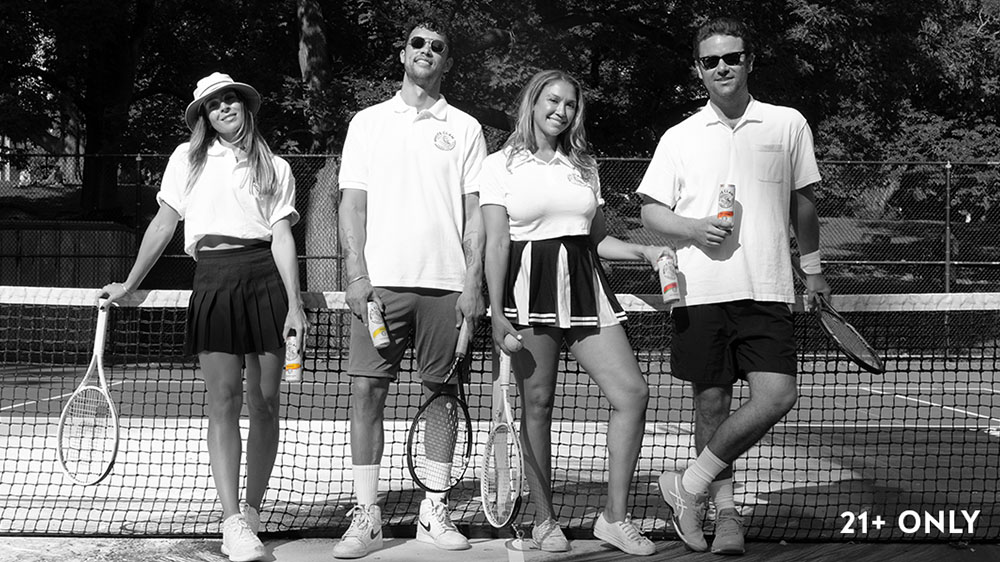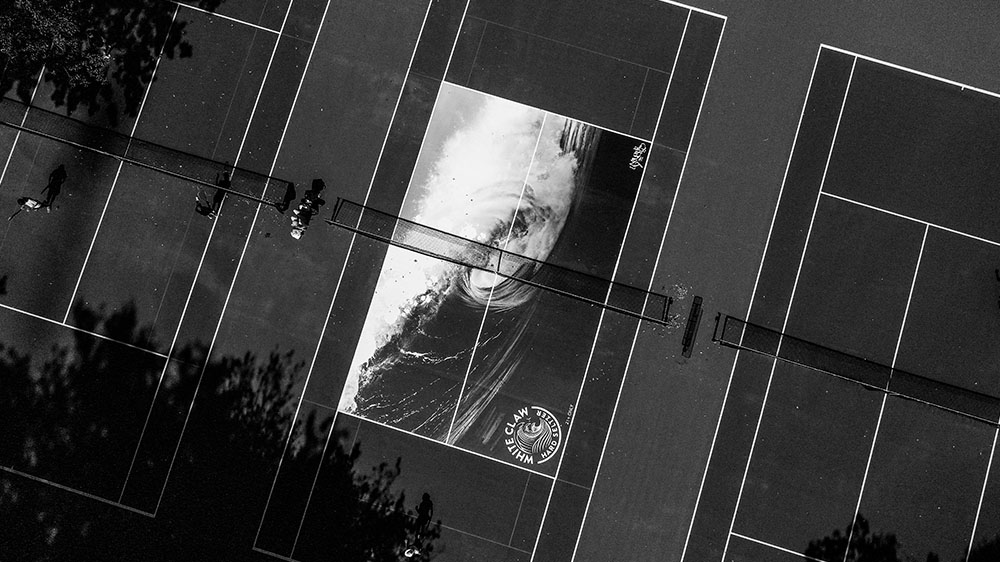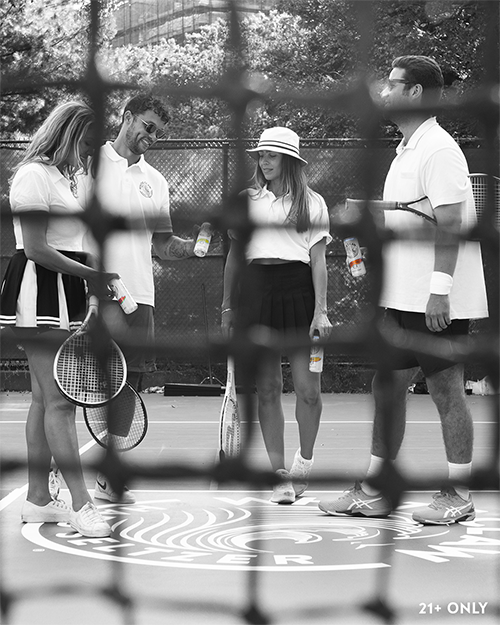By Khal Davenport
The bombastic work of world-renowned graffiti artist AMUSE 126 landed on a tennis court in Brooklyn thanks to a groundbreaking collaboration between Racquet and White Claw® Hard Seltzer, the nation’s leading hard seltzer. Fort Greene Tennis Association played host last Summer to a one-of-kind installation from Chicago-born AMUSE 126 and The Times that saw a complete court takeover in one of Brooklyn’s most storied neighborhoods.

“Art and tennis have been converging in the past year and so it was the perfect time to deliver White Claw to tennis culture in a new, relevant way,” said Jason Peterson, Founder of The Times. “Getting AMUSE’s work front and center on a tennis court in Brooklyn right after the US Open—that’s how we felt White Claw needed to show up to connect with tennis culture in a way that will interest their people.”
In my time covering the convergence of hip-hop culture throughout the globe, it’s the graffiti artists that are always the most interesting to speak with. AMUSE’s journey—which has taken him, the son of a police officer, the streets of Chicago to being named The Chicago Reader’s “Best Street Artist” and “Best Established Visual Artist” in 2016 to working with such high profile partners as the Chicago Cubs, NASCAR, A Tribe Called Quest.
“I have really tried to just push the boundaries and just keep making letter-based work,” AMUSE 126 said at the court unveiling at the Fort Greene Tennis Association in Brooklyn. “I can paint photorealism, I can paint a portrait, [or] I could paint a car. I want to do what just naturally comes out,” and that’s the more technically-precise, sometimes unrecognizable lettering that you can see when a graf writer has a couple of hours, a crate full of paint, and a set of angles they just can’t get out of their head.

AMUSE spoke about everything from how he started out as a graffiti writer and using his talents to keep the lights on, as well as how collaborations like this project help further aid his overall plan to disrupt the status quo—all while staying true to his overall vision.
“I had a bunch of factories near me [where] I reconnected and saw graffiti. I was by myself or with a buddy and like, ‘What is this? This is sick.’ I went over all my friends’ heads and I just kind of, like, took that weird right and just kept going back in to see it just keep changing and progressing. I was like, ‘Oh, yeah, this is something I want to do.’ I realized there are no boundaries. I’ve got the world at my fingertips for this type of thing; [it] took a while to learn that you can go around the world with it.”



